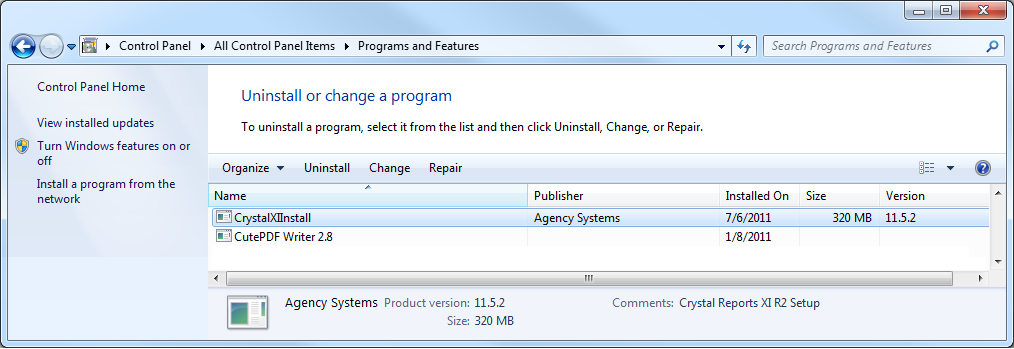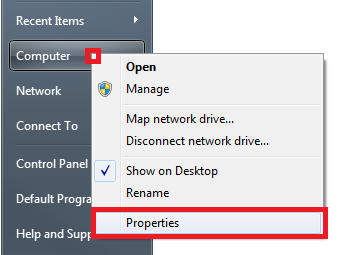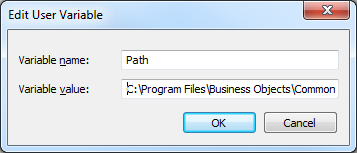Difference between revisions of "Error: Crpe32.dll not found"
Jump to navigation
Jump to search
(Created page with "Category:Crystal ReportsCategory:Error === Scope of the Problem === You receive the error message "Error: Crpe32.dll not found" opening Newton by Agency Systems. ==...") |
|||
| Line 1: | Line 1: | ||
| − | [[Category:Crystal Reports]][[Category:Error]] | + | [[Category:Crystal Reports]][[Category:Error]][[Category:Technical]] |
=== Scope of the Problem === | === Scope of the Problem === | ||
You receive the error message "Error: Crpe32.dll not found" opening Newton by Agency Systems. | You receive the error message "Error: Crpe32.dll not found" opening Newton by Agency Systems. | ||
Revision as of 19:15, 10 December 2013
Contents
Scope of the Problem
You receive the error message "Error: Crpe32.dll not found" opening Newton by Agency Systems.
Resolution
Crystal Reports has not been installed, or the Microsoft Windows environment variable for Crystal Reports has not be set.
Verify Crystal Reports Installation
- From the Microsoft Windows start menu, open the Control Panel.
- Select Programs and Features or Add / Remove Programs.
- Scroll down and verify that CrystalXIInstall is listed.
If Crystal Reports is listed as installed, skip to adding the environment variable manually.
If Crystal reports is not listed, continue to the next section.
Manually install Crystal Reports if not listed in Control Panel
- From the Microsoft Windows start menu, open Computer or My Computer.
- Double-Click on the shared drive where Newton is installed.
- Double-Click on the Empire folder.
- Double-Click on the Dist folder.
- Double-Click on CrystalInstall.msi to start the installation.
- Follow the prompts to complete the install.
If the error is continues, continue to the next section.
Add Environment Variable Manually
The user will need Microsoft Windows local admin rights to complete the next section.
- From the Microsoft Windows start menu, Right-Click on Computer or My Computer and select Properties.
- Select Advanced System Settings.
- Select Environment Variables.
- Select New to create a user variable.
- Enter Variable name: Path.
- Enter one of the following for Variable value:.
Windows 32 bit C:\Program Files\Business Objects\Common\3.5\bin;
Windows 64 bit C:\Program Files (x86)\Business Objects\Common\3.5\bin;
Select Ok -> Ok -> Ok.
Add Environment Variable for Microsoft Terminal Services Globally
The registry key is at the following location:
HKLM\SYTEM\Current Control Set\Control\Session Manager\Environment\Path



